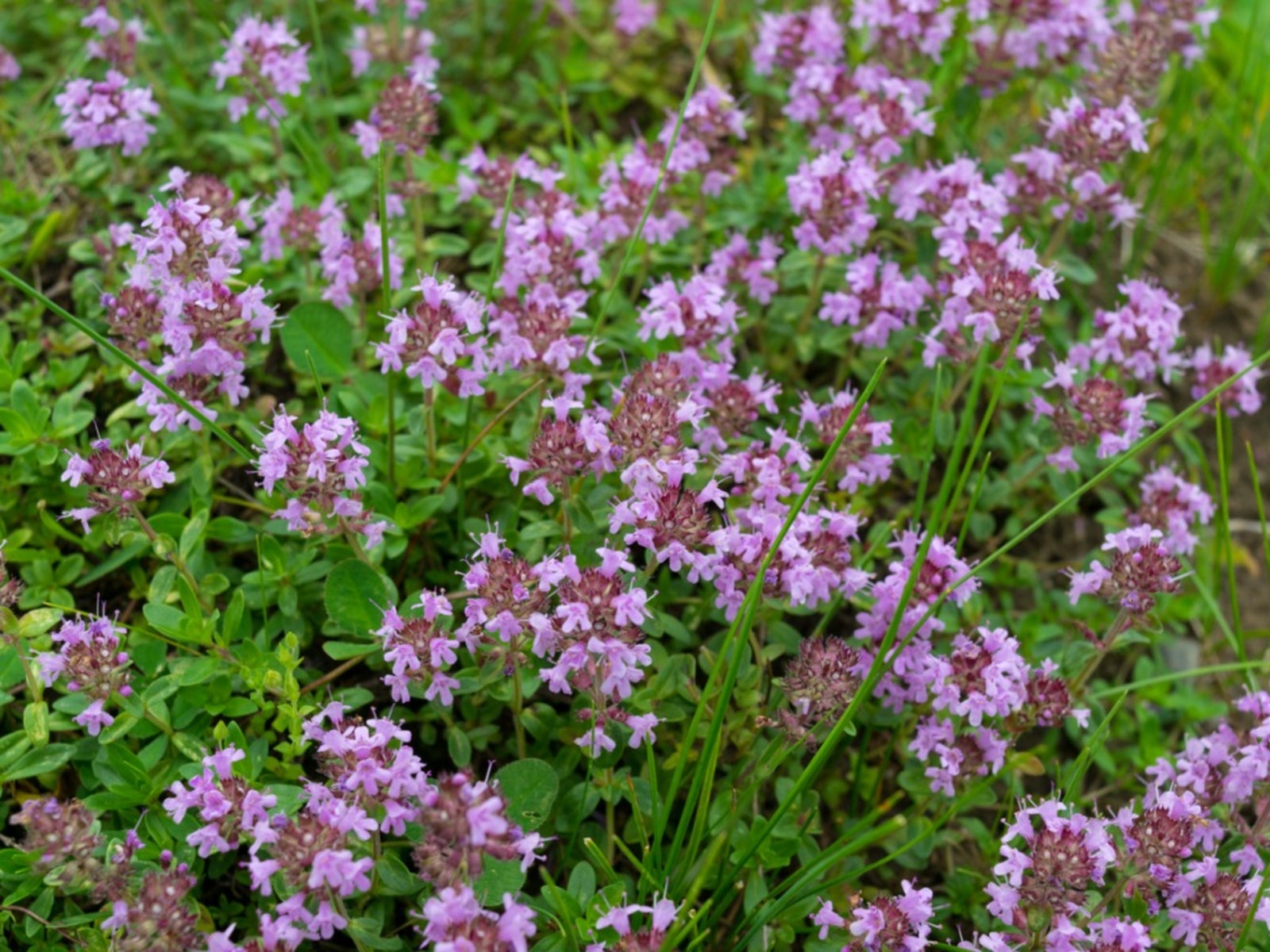What Is Elfin Thyme: Information On Elfin Creeping Thyme Plant

Elfin creeping thyme plant is as cherubic as its name implies, with small glossy, green aromatic leaves and teeny weensy purple or pink blossoms. Keep reading for information on elfin thyme care.
What is Elfin Thyme?
This nugget of information does not completely answer the question of, “What is elfin thyme?” Elfin creeping thyme plant (Thymus serpyllum) is a low growing, one to two inches (2.5-5 cm.) tall herbaceous perennial sub shrub with a dense mounding habit. In cold climates, this little herb is deciduous, while in milder regions, the plant will retain its foliage year round. Flowers are borne upon the fragrant green to grayish blue foliage in summer and are extremely attractive to bees. Native to Europe, this little creeping variety of thyme is not only drought and heat tolerant, but deer and rabbit resistant, making it a lovely option for a natural garden landscape.
How Do I Plant Elfin Thyme?
The slightly fuzzy or haired foliage of a growing elfin thyme works well among stepping stones, trailing through a rock garden and even as a forgiving substitute for grassy lawns. These little guys are adaptable to foot traffic, even fairly heavy foot traffic, and continue to spread while being tromped on, filling the air with their heavenly scent. Growing elfin thyme is hardy to USDA hardiness zone 4 and should be planted in full sun and well draining soil, although it will also adapt to shadier areas. Shaded areas of growing elfin thyme will tend to clump more while sun exposure encourages the thyme to become more of a ground cover, spreading to a width of about 4 to 8 inches (10 to 20 cm.). When growing elfin thyme, the plants require at least five hours of sun per day and should be spaced 6 inches (15 cm.) apart.
Elfin Thyme Care
The care of elfin thyme isn't complicated. These hardy and forgiving herbs adapt to a variety of climatic and environmental conditions, even able to survive cold winter weather and sustained frost. Needing no fertilization or frequent watering and with an ability to withstand both hot, dry conditions or chilly weather, elfin creeping thyme plant is often a prized selection for xeriscaping, a landscaping plan that requires no irrigation. Although the leaves are flavorful and aromatic, the tiny 1/8 to 3/8 inch (3 to 9 mm.) leaves are rather a pain to pick, so most people use other varieties of common thyme for their culinary herb uses and allow elfin thyme to play the role of an ornamental.
Sign up for the Gardening Know How newsletter today and receive a free copy of our e-book "How to Grow Delicious Tomatoes".

Amy Grant has been gardening for 30 years and writing for 15. A professional chef and caterer, Amy's area of expertise is culinary gardening.
